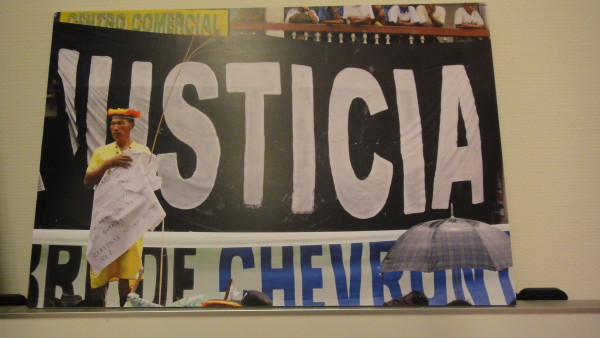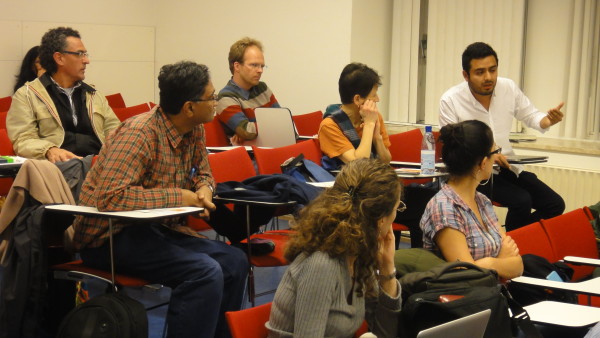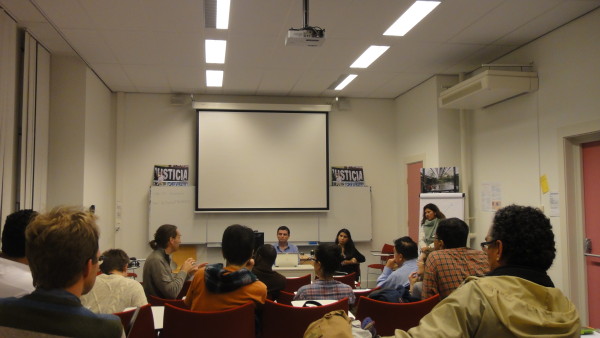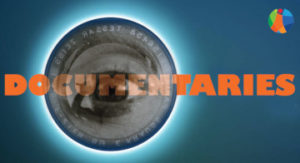Julio Prieto has been a lawyer for the plaintiffs against Chevron-Texaco for 10 years, or should we say, in this struggle of David against Goliath. In a conference at The International Institute of Social Studies (ISS). The Hague, on Oct 23 2014, he gave an overview on the legal case of an environmental crime of nearly 30 years, the struggle of the affected indigenous community for compensation and repair of the environmental damage.
In February 2011, a judge in Ecuador issued an $18 billion judgement against Chevron in a lawsuit brought on behalf of 30,000 residents. Ecuador’s highest court last year upheld the verdict but reduced the ammount to about $9.5 billion. Later in March 2014 U.S. District Judge Lewis Kaplan ruled that a multibillion-dollar pollution judgement against Chevron in 2011 by a court in Ecuador was obtained by means of “coercion”, “bribery,” and other acts violating the Racketeer Influenced and Corrupt Organizations Act (RICO). This RICO act was created to fight organized crime within the U.S. and was used to invalidate a sentence of an sovereign state and to declare the 30’000 plaintiffs together with their lawyers to be members of an criminal organisation. Furthermore, based on the U.S.-Ecuador Bilateral Investment Treaty (BIT) an international arbitration tribunal ruled that the state Ecuador has to pay 96 Million US-Dollar to the company. This is not yet the end of this battle.
Now this same company is pressuring to increase the protection of investments through the transnational treaty (TTIP) that the United States are currently negotiating with the European Union. Chevron has already said in a letter signed by its vice-president that: “a strong investment protection regime within the TTIP…would allow us and other U.S. businesses to better mitigate the risks associated with large-scale, capital-intensive and long term projects overseas “. It is very clear that these companies want to avoid risks for their invested capital; the risks for persons are not mentioned. What they do not want you to know is that those are the exact mechanisms Chevron uses to set its boots on the neck of the Ecuadorians.









